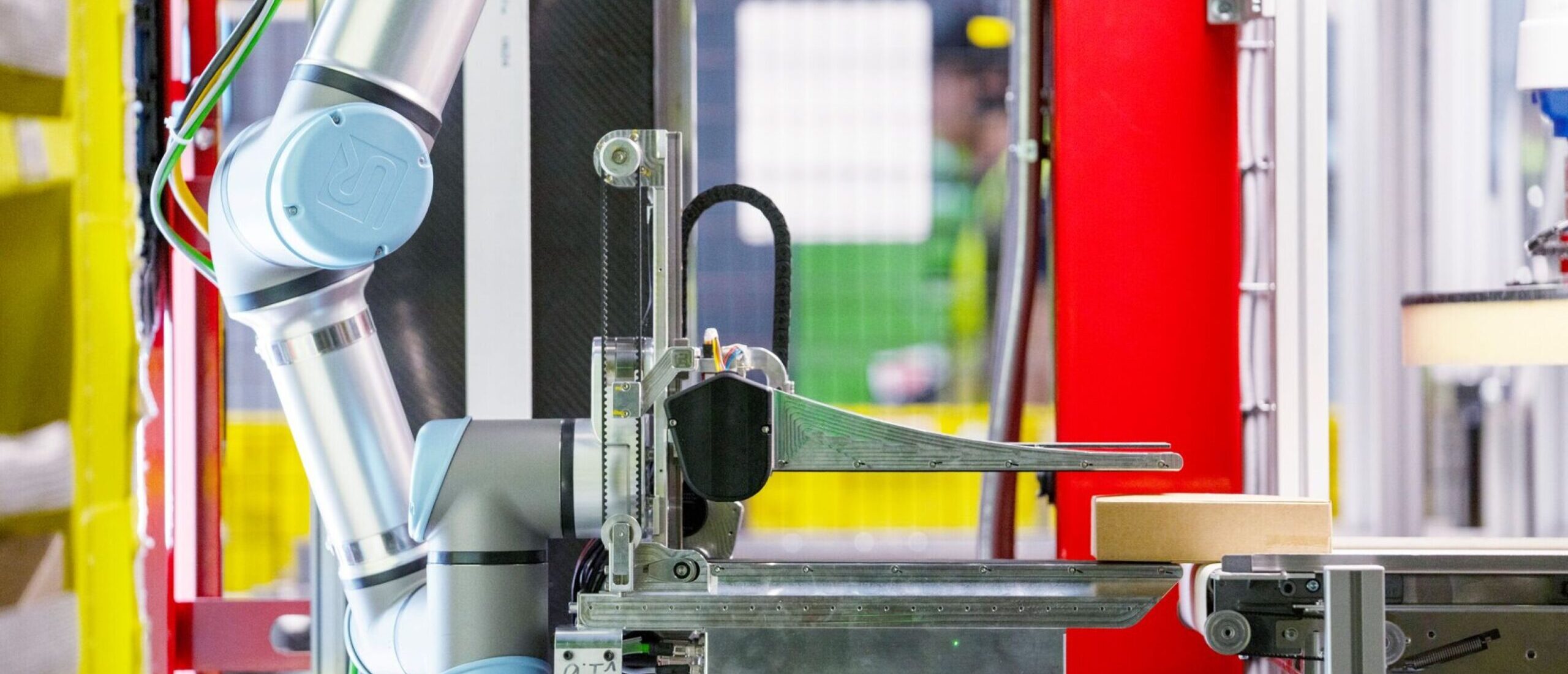
Amazon.com Inc. has a new non-human worker in its warehouses: A robot it claims has the “touch” necessary to shift 75% of the types of packages handled.
Armed with two gripping pincers, built-in conveyor belts, and a pointed probe that’s used to push items about, Vulcan has the proper strength and agility for most items, Amazon said, and it can learn on the fly to be more efficient at stowing packages within crates.
“Vulcan represents a fundamental leap forward in robotics,” Aaron Parness, Amazon’s director of applied science, said in announcing the machine at the company’s Delivering the Future event in Dortmund, Germany, on Wednesday. “It’s not just seeing the world, it’s feeling it, enabling capabilities that were impossible for Amazon robots until now.”
Most robots are “numb and dumb,” Parness said, touting Vulcan’s superiority to lesser peers in commercial settings. “In the past, when industrial robots have unexpected contact, they either emergency stop or smash through that contact. They often don’t even know they have hit something because they cannot sense it.”
Vulcan’s versatility should go a long way toward addressing an ongoing challenge at Amazon, which claims as many as 750,000 robots in its workforce: How to handle 400 million SKUs at a typical fulfillment center without mangling them or nearby human co-workers.
Development of Vulcan offers a breakthrough of sorts, and AWS is promptly putting it through the paces.
The robot is capable of working 20 hours a day, accounting for maintenance downtime, but it isn’t intended to replace humans, the company said. Instead, workers replaced by machines like Vulcan will be encouraged to take up new, safer roles and Amazon claims it has spent $1.2 billion training 350,000 workers in new skills.
Vulcan already is hard at work at some fulfillment centers. “Working alongside Vulcan, we can pick and stow with greater ease,” said Kari Freitas Hardy, a front-line employee at GEG1, based in Spokane, Wash. “It’s great to see how many of my co-workers have gained new job skills and taken on more technical roles, like I did, once they started working closer with the technology at our sites.”
For more than a decade, Amazon has plowed billions of dollars into robotics at its warehouses since 2012, when it acquired Kiva Systems, a maker of robots that service warehouses, for $775 million in cash. Its armada of bots range from Roomba-style platforms used to shift stacks of crates to mechanized arms that use suction to pick up items and pack boxes.

